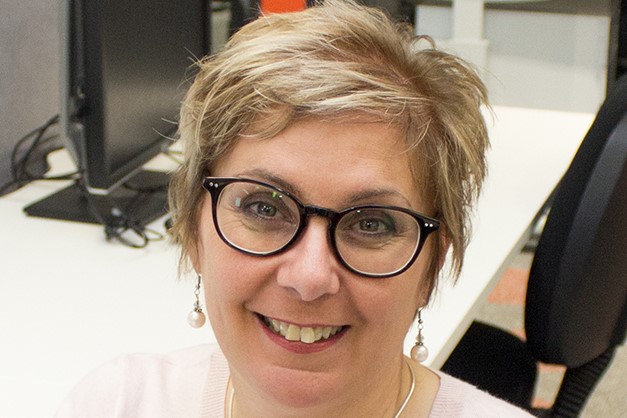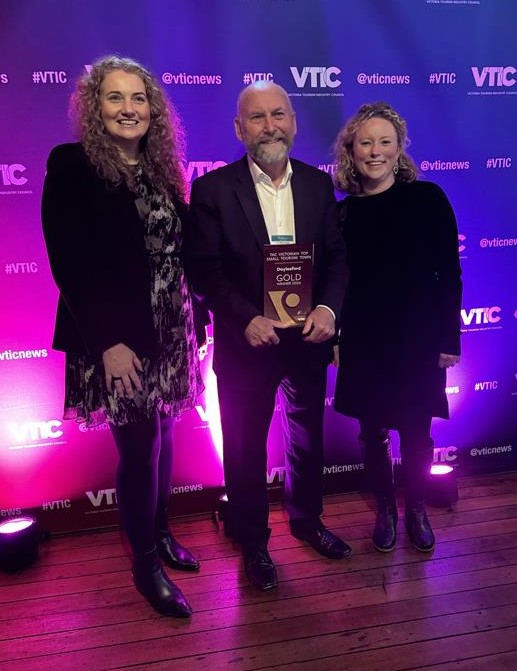June 13th, 2023Service to medicine recognised
Dr Sandra Staffieri has been awarded the Officer of the Order of Australia for distinguished service to medicine as an orthoptist and vision researcher, and to paediatric ophthalmology.

The part-time Hepburn resident is a research fellow at the University of Melbourne’s Centre for Eye Research Australia and the Retinoblastoma Care co-ordinator/senior clinical orthoptist at the Royal Children’s Hospital.
Her research is focused on hereditary eye diseases, including congenital glaucoma, congenital cataract, eye movement disorders and retinoblastoma.
Dr Staffieri’s PhD, with the aim of reducing delayed diagnosis of retinoblastoma (eye cancer in children), included the development and evaluation of an information pamphlet for new parents describing important early signs of eye problems in children.
Dr Staffieri said while her career had been “accidental” in many ways, she took her work very seriously and was privileged to be able to help families through journeys after days that were often their worst nightmare.
While she trained as an orthopist, gaining a diploma in 1984, she upgraded that to a Bachelor when it became available in 1992 and found herself working in paediatrics.
“I actually wanted to be a paediatrician growing up so that was pretty lucky, and it was really just how my career unfolded. I am well known to have said I prefer working with children than adults.”
Dr Staffieri then found herself coordinating children with retinoblastoma in Victoria and Tasmania at the Royal Children’s Hospital – ensuring all screening appointments were kept along with tracking down any better available outcomes for the children and their families.
“We were giving families quite devastating news, that their child has cancer or is at risk of cancer, and that is quite harrowing and involves a lot of intervention for many years.
“Anyway, it was a conference in 2012 where it all took off and I realised that delayed diagnosis was really common even in a country like Australia. Children could be diagnosed earlier but parents sometimes did not know the signs that something was not right, and even health care professionals could be unaware. That is purely because the child is well and healthy and they keep doing what everyone else is doing – it is not like many other cancers.
“So it became my mission to try and improve things and the past 11 years I have had an incredible journey, doing a PhD in developing awareness for parents and trying to get that implemented on a large scale here and overseas.”
Dr Staffieri also went to Papua New Guinea earlier this year to implement more awareness strategies – a country where children still die from retinoblastoma.
“Our kids don’t die here in Australia but sometimes we can’t save the eye – and that is the case everywhere in the world.”

Dr Staffieri is also kept busy doing genetic eye research at the University of Melbourne’s CERA and works on the characteristic of particular eye diseases, tracking down family members and getting DNA samples.
“If we can unravel the secret of why different eye diseases occur and why some people have greater vision loss than others, then we can look at different treatments, and better treatments.”
Dr Staffieri said working with children was challenging but not in the way many people would think. “It is just a different set of skills and there is nothing more rewarding than being able to talk around a really frightened child and being able to get all the information you need from them for the team to make a decision. That is quite rewarding.”
Retinoblastoma can run in families, which means many of the children seen 30 years ago are now coming with their own babies for screening, but for the most part there is no family history involved.
But it remains the most survivable of paediatric cancers offering very good long-term outcomes even if there is impairment in one or both eyes.
“I have a list of patients who have gone on, despite having very little vision, to have fantastic careers and lives.”
Dr Staffieri said her house in Hepburn was her “happy place” where she and her husband could retreat from their busy work lives and “catch our breath.” “It’s been a real Godsend and we have been looking to move up to Hepburn for a long time now the kids have all flown the nest.”
The connection came years ago when her mother migrated at the age of 13 with her family after World War II. They ended up at the migrant camp at Bonegilla in Victoria and then her mother was sent to the Daylesford Convent as a boarder.
“Every year in autumn Mum would traipse us up to see the Presentation nuns and I loved the autumn colours. When we are here we watch the autumn evolve and then the leaves are gone and winter comes and then we see spring and the green fuzz of the leaves on the trees. We just love to be here, kick back and relax. When we pass the Calder Raceway, I can just feel my muscles relax.”
Dr Staffieri said she had mixed feelings about her award because it is some ways represented “someone else’s grief – but I also have the incredible privilege to be there for them and try and make it a little easier and then I watch their kids grow and that has been incredible”.
“From that first day with the parents thinking the world has opened up and they have fallen through a crack, yet their children have got through all of that and grown up to be adults and do amazing things. It is overwhelming and pleasurable in equal measure.
“It is nice to be recognised, because it is not just a job, but I do what I hope someone would do for me if I was in their shoes.”
Words: Donna Kelly | Images: Contributed










